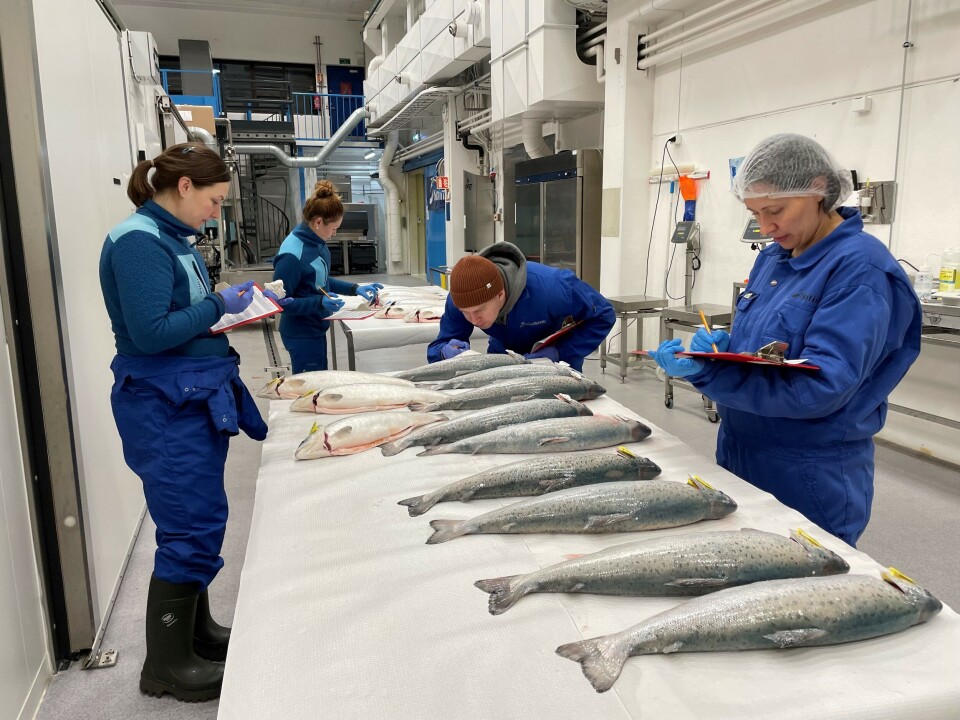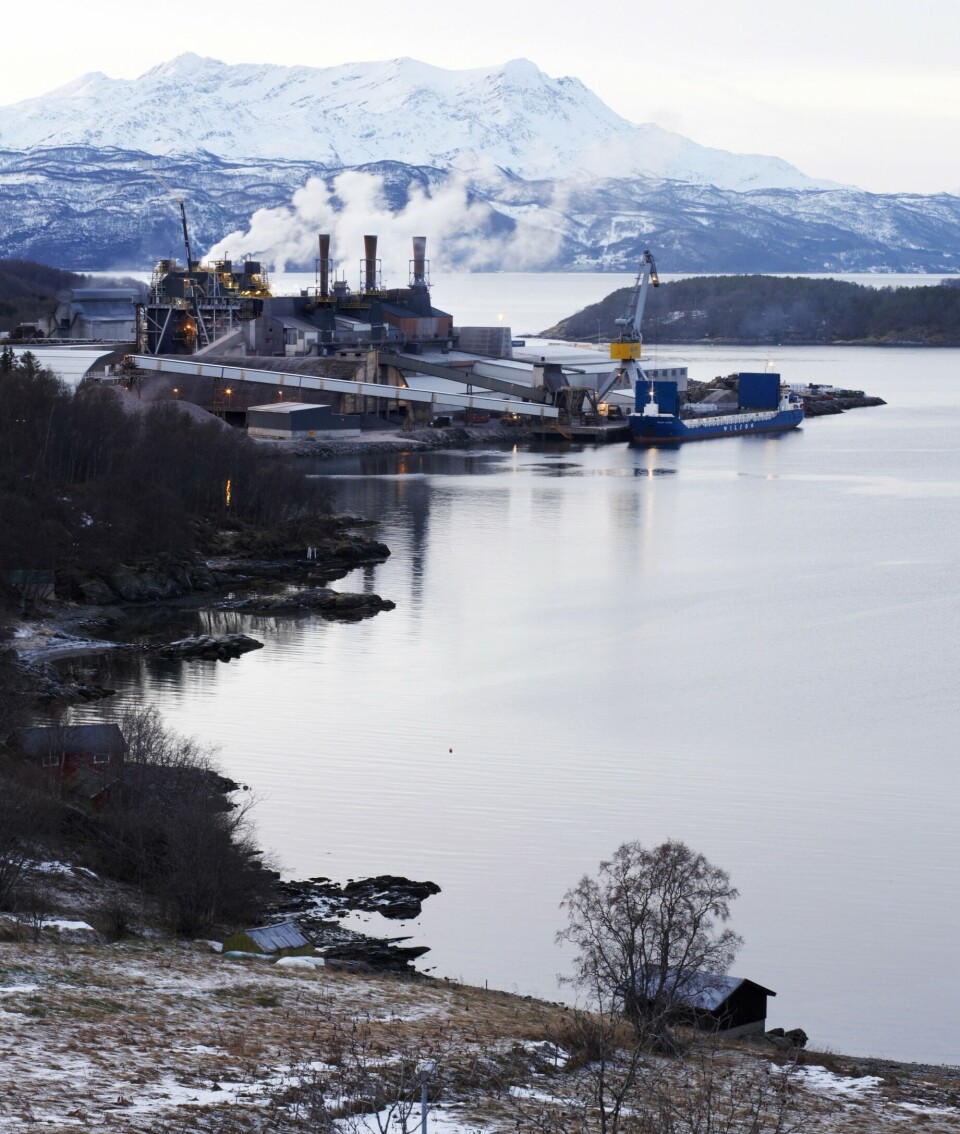THIS CONTENT IS BROUGHT TO YOU BY Nofima The Norwegian Institute of Food, Fisheries and Aquaculture Research - read more
Researchers make healthy salmon feed from polluting CO₂
Carbon dioxide is turned into nutritious feed for farmed salmon. Science fiction? Absolutely not.

An annual emission of 300,000 tonnes of carbon dioxide (CO₂) from Finnfjord AS, a ferrosilicon producer in Northern Norway, is captured by microalgae. The algae use CO₂ as an energy source. You could say the algae ‘eat’ CO₂ – much like plants on land do.
The Norwegian food research institute Nofima make the feed that contains the algae.
“We incorporate the algae into the feed and conduct growth trials with the salmon, from fry to slaughter weight. It's technically challenging, but results so far show that the salmon grow well on the algae feed and are in good health,” says senior scientist Sten Siikavuopio, who leads Nofima’s part of the project.
Finnfjord AS aims for zero emissions – and to make full use of all the CO₂ the plant produces.

The idea of turning CO₂ into food for diatoms (algae) – which then become a valuable part of salmon feed – is being developed by UiT the Arctic University of Norway, SINTEF, and Nofima, in collaboration with Finnfjord AS.
Diatoms are very rich in fatty acids
One of the major challenges in the global aquaculture industry has been sourcing enough marine oils for salmon feed. Researchers are now finding the most promising new ingredients for fish feed at the very bottom of the food chain, including microalgae. These algae are very rich in omega-3 fatty acids such as DHA and EPA, which salmon need in their diet.
“Microalgae can grow quickly and produce more of the healthy omega-3 fatty acids when cultivated in large reactors at Finnfjord AS. This makes them particularly interesting as a feed ingredient,” says Siikavuopio.
He believes algae oil could potentially replace fish oil in fish feed.
“Previous tests where diatoms were added to standard salmon feed have demonstrated that the salmon have maintained good health throughout their life cycle on such feed. But the maximum addition of algae in feed so far has only been three per cent. We need to find out how much algae can be added to the feed,” he says.
One reason for the low algae content has been issues with the water level in processed algae biomass. But with better technology, it is now possible to include more.
“With the new feed we've tested, we've managed to include up to 15 per cent algae in the feed. Trials so far show that the fish grow and thrive very well with a high inclusion of algae in the feed,” says Siikavuopio.
A carefully developed recipe
The system that makes CO₂ and NOx emissions from ferrosilicon production usable for algae growth was developed by Finnfjord AS and UiT the Arctic University of Norway. Their collaboration includes growing algae in large tanks at the smelter.
Carbon dioxide – the exhaust – is fed into these tanks, where the algae convert it into protein and valuable marine oil.
The algae biomass is then sent to feed producers, who use a carefully developed recipe to create feed containing algae.

This specially made feed is now being tested in salmon production. Along with strong growth and fish health, researchers and fish farmers are seeing another clear benefit of using algae.
“Microalgae in the feed also result in less salmon lice infection. This has been documented,” says Siikavuopio.
Salmon do well on algae feed
Siikavuopio works in the production biology department at Nofima. However, several departments at the institute are involved in the research project.
The feed recipe was developed at Nofima's feed technology centre. Experts led the work on assessing the quality and health of the salmon fed with algae-based feed:
- Is the fish edible? Absolutely.
- Is the muscle in salmon fed with CO₂-consuming algae different from other salmon? No.
- Is the salmon in good health? Yes.
To date, only a tiny fraction of the world’s many microalgae species have been considered as potential feed for aquaculture.
“There will likely be more work testing different types of algae and optimising the processes both for cultivating the algae and using the marine oil in fish feed,” says Sten Siikavuopio.

This content is paid for and presented by Nofima The Norwegian Institute of Food, Fisheries and Aquaculture Research
This content is created by Nofima's communication staff, who use this platform to communicate science and share results from research with the public. Nofima is one of more than 80 owners of ScienceNorway.no. Read more here.
More content from Nofima:
-
Pumpkins are good for more than just Halloween decorations
-
This is how temperature affects a salmon's health and growth
-
Study: Omega-3 and zinc is a powerful duo for salmon
-
Fish may turn yellow if frozen too fresh
-
Is it better if food is packaged in plastic or paperboard?
-
Researchers have found the cause of kidney stones in rainbow trout




































